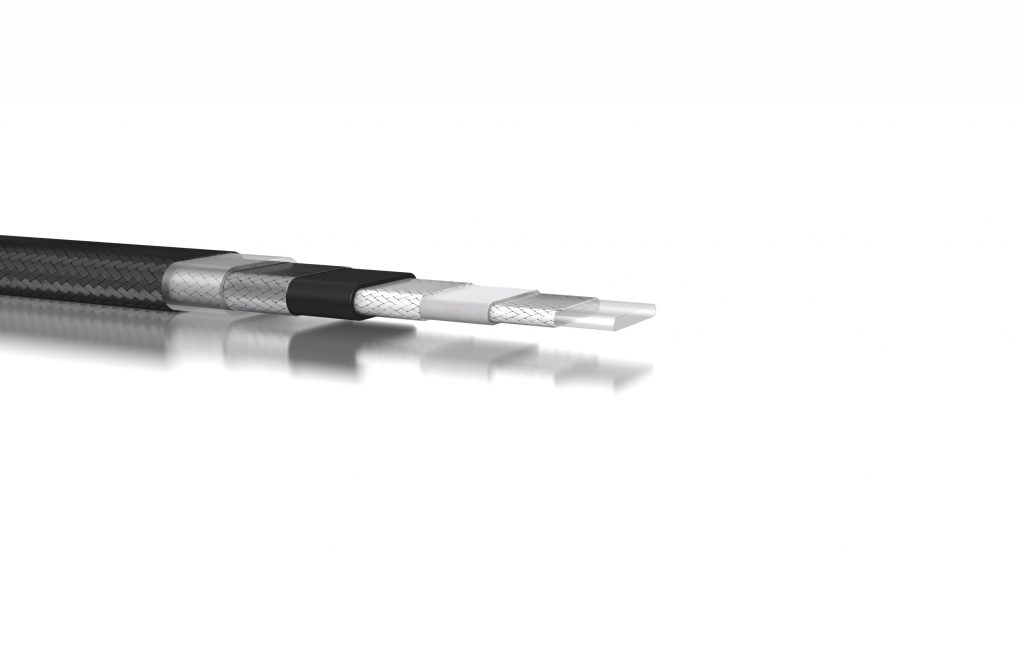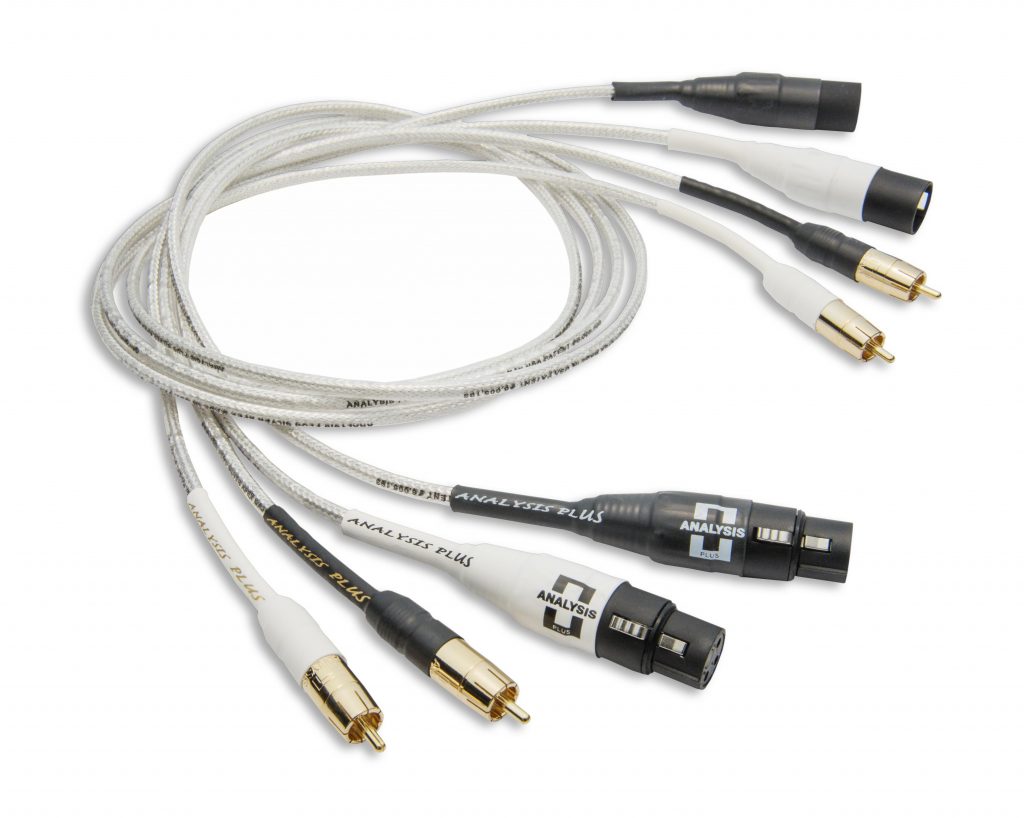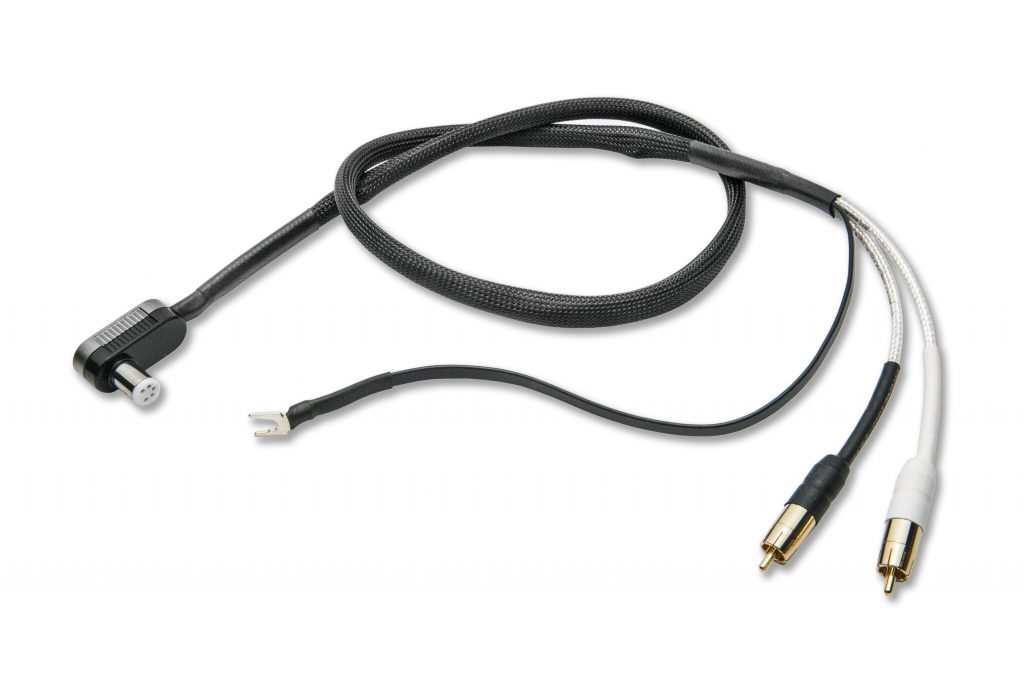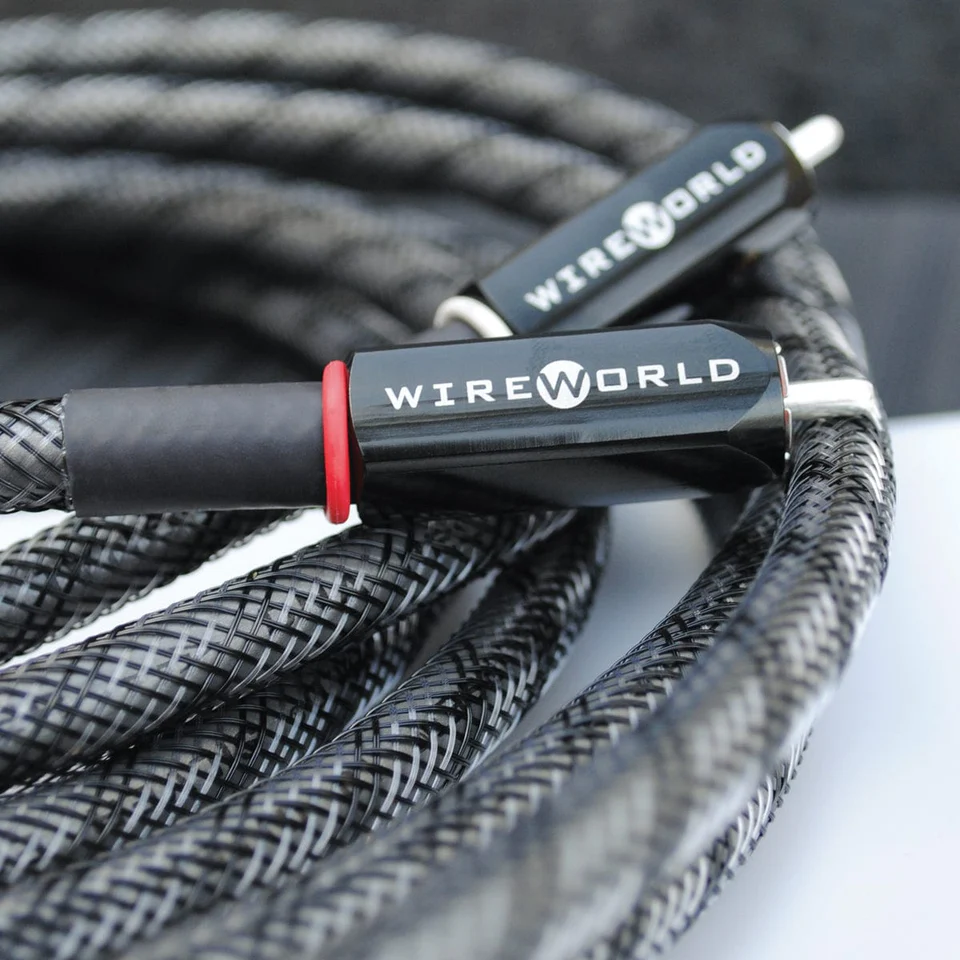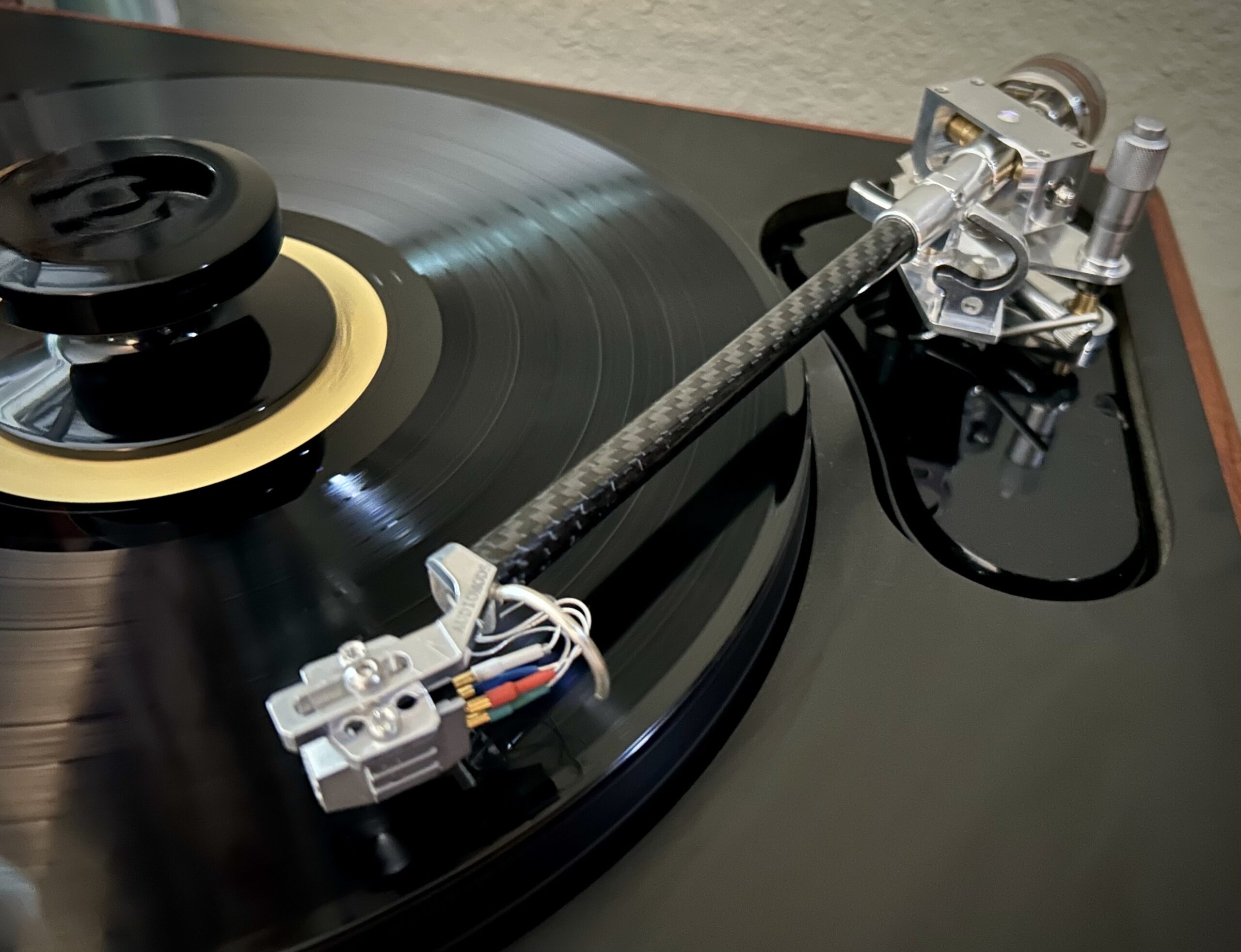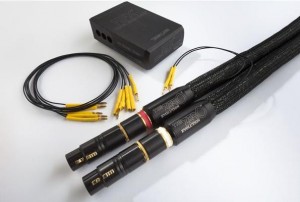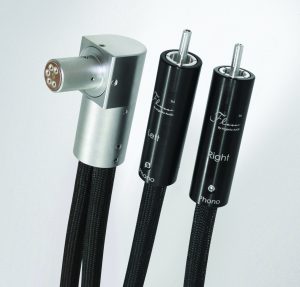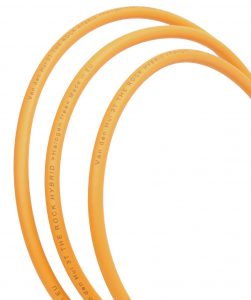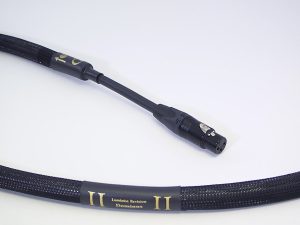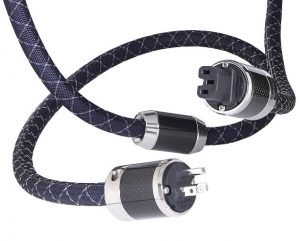Analysis Plus is essentially an engineering firm that has chosen audio manufacturing as one of the areas to focus their resources. What I find interesting is that the fundamental concepts and design geometry that Mark Markel had identified years ago has remained essentially unchanged within their product line. In today's popular culture, a large cross-section of people are drawn to new, improved, enhanced, or next generation, all of which basically boils down to the concept of different. Now, Analysis Plus has developed refinements to their products over the years, with advancements in conductor materials, terminations, and minor tweaks of the design implementation. However, the basic architecture of the design has remained unchanged, as the foundational engineering principals that AP cables are based on are as technically sound and relevant to audio reproduction today as it was 5,10, or 20 years ago. Yet, Mark Markel is a determined fellow, and one smart cookie to boot, and he has finally developed a revision to his cable design that results in measurable advancements in signal transfer over his original stacked oval recipe. The Silver Apex represents proven engineering solutions that Mark has developed over the years, and combines it with an innovative manufacturing process to create a statement product. So perhaps, in this case, we can say the Analysis cables are new and improved, well, because they really are.
The Silver Apex geometry is essentially a hollow oval cable inside another hollow oval cable, contained in a third hollow oval cable. At first glance this looks like a double shielded design, and it certainly is that. However, there is a bit more going on than what you would first assume. The inner hollow oval is the positive leg and wired to the center pin on the RCA connector. The second layer of wire is the neutral leg and is attached to the outer connector. The final layer of wire is the shield, which is tied to the outer connector also. In the Analysis Plus cables the shield wire is not floated, instead it is soldered to the RCA jacks at both ends. This arrangement is based on the research of Henry Ott, who worked at Bell Labs; and writes that superior shielding in the audio bandwidth occurs with this arrangement. In an XLR cable, the inner leg goes to Pin 1, while the neutral leg attaches to Pin 2, and the shield is terminated on Pin 3. In Mark's design, the signal travels in the innermost run of wire, while the second leg stabilizes and contains the magnetic field created by the signal traveling through the energized strands. A layer of mylar tape is used to define the chamber between the two conductors and ensure an even spacing. The goal here is to create a uniform and stable magnetic field, which is determined by the interaction between these two runs of wire. Between the neutral conductor and the shield, a layer of Teflon dielectric is used to fine tune the impedance of the cable. In this design impedance is a function of both wire geometry and the interaction of the dielectric. PVC is used for the outer layer of the cable, as it is both flexible and durable, and does not influence signal transfer properties of the cable. As previously mentioned, the Silver Apex is a double shielded design, as this is a function of the second and third layer of wire. With the two sections working in conjunction noise rejection is not an additive process, but rather compounding in function and lowers the noise levels past the 50% threshold.
The wiring used in the Silver Apex contains a copper core for stabilization, which is then coated with high purity silver. The physical demands of the hollow core geometry require a threshold of strength to maintain shape, and this is the function of the copper core. Yet a reasonable degree of flexibility must be maintained for the wire to be easily routed and lay flat. In a home environment, this is often a concern that many audiophiles have, as aesthetics and domestic harmony suffer when cables cannot be unobtrusively located. The concentric architecture results in a smaller cross section and improved flexibility over the traditional Analysis Plus stacked oval design, and I find it to be significantly easier to dress in my system. The RCA ends are a custom design for Analysis Plus that maintain a firm grasp on RCA jacks. Mark has chosen to retire the previous locking RCA ends, as the new design can provide comparable grip, and are easier to install and remove. I believe the new ends are a worthwhile change, for in the past I found the locking ends tended to bind up, and getting them to release was a tedious process.
Historically speaking, Analysis Plus offerings have been considered a high-quality product with a reasonable selling price. The Silver Apex are their top tier offering, and the price tag is not cheap, yet the MSRP of $1106 for a meter pair is not unreasonable given the labor intensive process of manufacturing this cable. The Analysis Plus cables are manufactured in house as they have the tooling, jigs, and guides to assemble their products. Due to the complexity of the design, the longest run of Silver Apex Mark has achieved was under 100 feet without stopping for realignment of the machinery. In contrast, a 700-foot run of Crystal Oval or Silver Oval wire can occur in a single uninterrupted session. Manufacturing the Silver Apex wire has a demanding set of challenges, and this also factors into the final price of the interconnects, as does the high silver content of the raw wire, and the custom parts contained in the cable.
The Silver Apex were inserted in place of the VH Audio Spectrum CU interconnects that have been my reference cable for several years. Analysis Plus also shipped a pair of the cables with a DINN termination as it is an intriguing candidate for a tone arm cable. The other cables were terminated with RCA ends, although there is an option for XLR connectors. In my review system, amplification duties were handled by a First Watt F7 amplifier, and a Plinius Audio Tautoro preamp. Speakers were the superb JBL 4365 floor monitors. Digital source components were an Audio Magic Kukama DAC and Mac Mini/PS Audio LANRover combination. The turntable in service for this review was a Denon DP 75 in custom VPI plinth, with an Acos GST 801 arm and Ortofon MC 90 cartridge. Clean power was supplied by a PS Audio P10 AC Regenerator and PI Audio Group power cords. The final component was the Wireworld Eclipse 7 speaker wire.
When talking with Mark at Analysis Plus, the discussion eventually turned to parameters such as transient response, rise time, and noise floor. Now these are concepts that are normally associated with amplifier design, and they extend beyond the realm of what most people consider to be attributes of wire. Mark states that the areas of impedance, capacitance, and resistance (LCR) only go so far in explaining how a cable interacts with amplification and speaker loads. While LCR parameters are important, he also concentrates on getting leading edge transients of a signal correct. The aspects of cable design that are important to Mark are not this ambiguous collection of nebulous fluff that you read in many an advertising blurb, but rather measurements that are verifiable, repeatable, and have a correlation to established electrical theory. As a critical and experienced listener, I freely admit to not using scope traces to draw my conclusions, but I will say that the Silver Apex is one of the most neutral and refined interconnects I have ever encountered. In the Tri Cities, Washington, there is a large folk music festival called the Tumbleweed that comes around every Labor Day weekend. I have been fortunate to hear a band called The Cutters at this venue several times, and in every performance, they play "Fields of Gettysburg" [Front Row Seat; Three Rivers Folk Society]. I am usually within 20 feet of the stage for this song and I have it on a disc that was recorded from one of the shows I attended. With the Silver Apex in the system, this was the finest reproduction of this piece I have experienced in my home. One aspect I found intriguing is that the space and placement of the performers felt authentic, as there was not a great deal of depth to the recording, just like I have observed in their onstage performances. Once again, this is far more natural presentation to the songs I have heard The Cutters play, and I appreciate this raw and unvarnished reflection of the music.
I appreciate unplugged, or acoustic recordings from a wide variety of artists. Naked Songs by Rickie Lee Jones is a disc that I enjoy sitting down and listening to from beginning to end. I prefer the live versions of her songs over the studio ones, as they sound far more vivid and immediate. The combination of the First Watt F7 amplifier and Plinius Tautoro preamp excel at sifting through the fine details in music, yet with the Silver Apex installed this combo reached new heights regarding information retrieval. These are the subtle aspects of music that bring it alive, and this draws me into songs in a way that an overly warm and romantic sound cannot. In "We Belong Together" [Naked Songs; Reprise 9 45950-2] I can clearly hear the interaction between the crowd and RLJ, with the feeling of being part of the casual banter that goes on being between her and I, and not just other people in the crowd. This is because you can understand her snippets of conversation, like you are sitting in the first couple of rows of seats or tables, and not buried in the back of the venue where you can only hear the major components of the music. Of course, there is far more to this song than RLJ's cryptic mumblings, and I found myself admiring her style at the piano. I could hear the hammers crash into the stings during powerful passages, while the cords resolved seamlessly into each other, and the melody meandered underneath the crests. Over the years I have heard this album many times, yet with the Silver Apex in the system, this music felt fresh and new, as it was presented with an authenticity that few cables have ever brought to my system.
Reference quality interconnects should stand out in the audio world with their overall performance, yet in doing so they should be unobtrusive in their function within our systems. What I mean by this is a high-performance cable needs to have an even octave to octave tonal balance, and never accentuate any portion of the audio band. This is a tall order, and I have had many a quality cable that could not meet this standard, yet they were still a good value given their relative cost. The Silver Apex is, without a doubt, a reference quality cable. When listening to "Mystery to Me" [Out of the Valley; High Street Records WHCD 10325] by John Gorka, I found this cable was able to bring a level of even handedness to the music that eluded the VH Audio interconnect I normally use. Those cables have been long term residents in my system, and I have always been content with them. Yet the Silver Apex has an improved tonal balance from top to bottom and exposes the areas that the Spectrum CU has noticeable enhancements in the upper midrange band. The bass guitar and drum kit also have greater weight with the Silver Apex, which contributes to a fuller sound without any embellishments that draw attention away from the music. What is interesting is that Goroka's vocals are lighter, nimbler, yet have deeper extension in terms of overall range. While I still enjoy my previous reference cable, I must acknowledge that the Analysis Plus cable is a superior product.
With all this emphasis about characteristics like rise time and transient response, you would expect the Silver Apex interconnects to excel in the areas of pace and timing; or perhaps what you would call that boogie factor. If ain't got that swing, and all that jazz, right? So, one evening I played "Deedle's Blues" [Diane Schuur and the Count Basie Orchestra; GRP GR-1039] by Diane Schuur and the Count Basie Orchestra. I was very pleased with what I heard from the opening notes. The horns are sharp, metallic, and have excellent attack. The saxophones and trombones are smooth, with a warm texture, yet still convey a metric ton of energy. The bass line flows behind that huge horn section, yet is easy to follow and has that distinctive Basie bounce. Then there is Diane, one of the great voices in jazz, and the Silver Apex does justice to the tune she literally belts out. This song smokes from the beginning to the end, and these interconnects faithfully transfer the signal from DAC to preamp, and preamp to power amp, without compromising the timing and pace of the music in any way.
The Analysis Plus Silver Apex is a top-flight phono cable, and while I would not call it inexpensive; when compared to the upper tier cables on the market it is certainly attractively priced. Obviously, there is less expensive options, yet in the analog world it is possible to drop a hefty stack of Benjamin's on a tone arm cable. The Acos GST 801 is a classic Japanese high-performance arm that is built with internal silver wire, so it makes sense to partner it with a silver tone arm cable. All the attributes that make the Silver Apex a great cable for component pairings are even more important in the millivolt region that low output moving coils reside in. This underscores the importance of the double shielding used in the Silver Apex, where that ultra-low noise floor becomes of even greater importance. I threw my favorite Big Bad Voodoo Daddy album onto the Denon DP75/Acos/Ortofon A90 turntable combination and sat back for a listen. What I found is that the superb tonal balance, the ability to highlight dynamic contrasts, and the organic mid band all came into play when used in an analog environment. On "Is You Is, Or Is You Ain't My Baby" [Louie, Louie, Louie; Savoy Jazz SVY16134] I found the song to be supremely focused, with vocals that were natural in tone and texture, and the band had that classic jump vibe that makes it the premier modern swing band of our era. Everything that analog playback excels at was turned up a notch, with a large and deep soundstage that had instruments and singers fully formed against a pitch black back drop. The benefits of a low noise floor and quick rise time are clearly apparent, and these attributes make the Silver Apex an excellent choice for a phono cable.
Analysis Plus has earned a reputation of building well engineered cables that have a high level of value compared to the overall price structure in the marketplace. The stacked hollow oval geometry has been a mainstay in the Analysis Plus cables for years, with only refinements applied to the original design. The Silver Apex is a continuation of the oval hollow core geometry, yet it has a cache of advancements that raises the bar of what can be expected from this price point. The sheathing of three runs of wire within each other in a concentric pattern allows for a stable magnetic field between the positive and return legs of the cable. The two outer layers also function as a double layered shield, which results in an extremely low noise floor. Both attributes result in substantial reduction of frequency smearing, and this translates into an even octave to octave tonal balance with improved focus of performers. The lower noise floor improves the transparency of the cable and highlights the micro level of dynamic contrasts within the music. Some people may feel that silver as a conductor has a sonic signature that is cold and monochromatic, however that is not the case with this cable. The tonal balance sits as close to neutral as can be expected, with no overt indicators that are tied to the silver content of the wire. The Silver Apex cables are a statement piece from Mark Markel, and while the selling price is not stratospheric, make no mistake this is a reference level product. Mark has also released a 9-gauge speaker wire in the Silver Apex line, and perhaps we will be able to present a review of it in the coming months. For hobbyists who have assembled a high-performance audio system, I would put these Analysis Plus Silver Apex cables on a short list to audition. This cable is going to take up permanent residence in my reference system, as I value the neutrality and refinement they bring to the table.
Silver Apex Interconnects
Retail: $1106 for a meter pair
Analysis Plus
Manufacturer's Response
Our stacked hollow oval design has very low noise floor and the new hollow oval inside a hollow oval inside a hollow oval is more than double better at lowering the noise floor. The most important thing is the cable design geometry. Material are important but you could make a Yugo out of titanium and you would have a better Yugo but not a super car.
The electromagnetic fields are between the first and second conductor with the outer layer acting as an added shield for an incredible low noise floor and a very fast cable with hermetic protection against noise.
This cable gives you increased signal transfer characteristics with it fast rise time and like all Analysis Plus cables you don't have to worry about frequency smearing.
The cable has the same gauge wires as the Solo Crystal Oval-In and Silver Oval-In but the hollow oval inside a hollow oval inside a hollow oval has a smaller cross section than two stacked hollow ovals inside a hollow oval.
We finally were able to do a production run of this cable which is very challenging to make. For example the last production run of 700 feet we had to start and stop production ten times and the longest run was only 94 ft. With the stacked hollow ovals we can do 700 feet in one take. The most important thing we feel is for the listener to use the most sophisticated signal processors that you posses—your ears—tell you if it is worth it.
Sincerely,
Mark Markel
Analysis Plus




